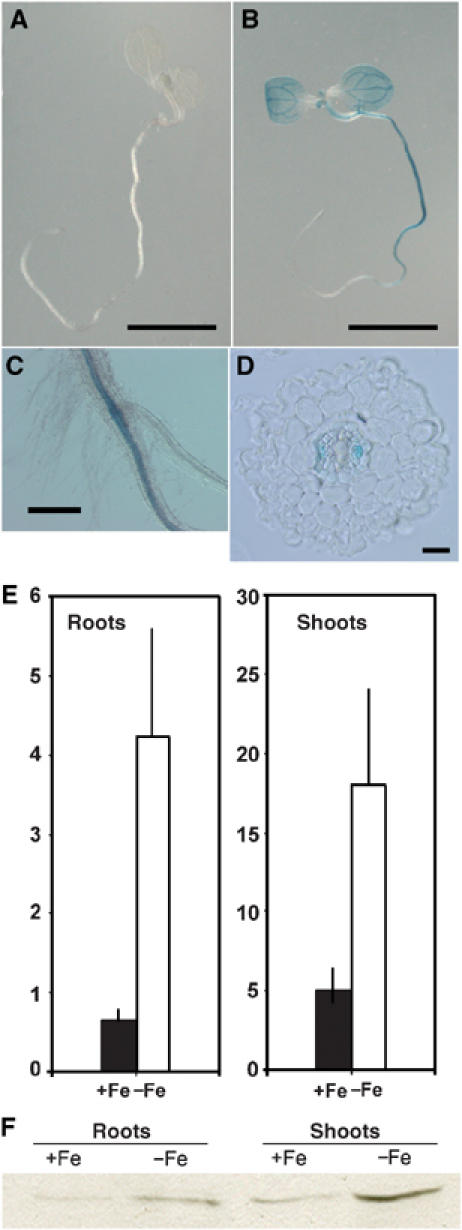Figure 1.

Tissue-specific expression of AtNRAMP4 is induced under Fe starvation. (A–D) Histochemical staining of GUS reporter activity in proAtNRAMP4-GUS seedlings grown for 7 days either on Fe replete medium (ABIS+100 μM FeHBED, A) or under Fe starvation (ABIS without Fe+100 μM ferrozine, B). Scale bar is 1 cm. (C) Detail of the junction between root and hypocotyl in a seedling grown under Fe starvation showing expression in vascular tissues. Scale bar is 0.6 mm. (D) Cross section through the root of a seedling grown under Fe starvation showing preferential expression in phloem tissues. Scale bar is 20 μm. (E) Quantitative analysis of GUS activity in protein extracts from roots or shoots of proAtNRAMP4-GUS seedlings. Seedlings were grown for a week on Fe-replete medium and then transferred either to +Fe (black bar) or −Fe (white bar) medium. Mean activities±s.e. (n=5 independent lines). (F) AtNRAMP4 protein abundance is upregulated under Fe starvation. Western blot experiment showing relative abundance of AtNRAMP4 protein in roots and shoots of Fe-starved (−Fe) or Fe-replete (+Fe) A. thaliana ecotype WS seedlings. 20 μg of proteins was loaded in each lane. AtNRAMP4 migrated at 48 kDa. Growth conditions as in (E).
